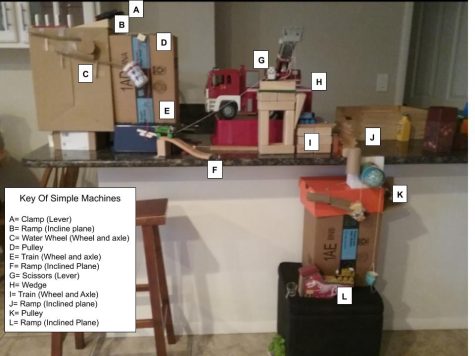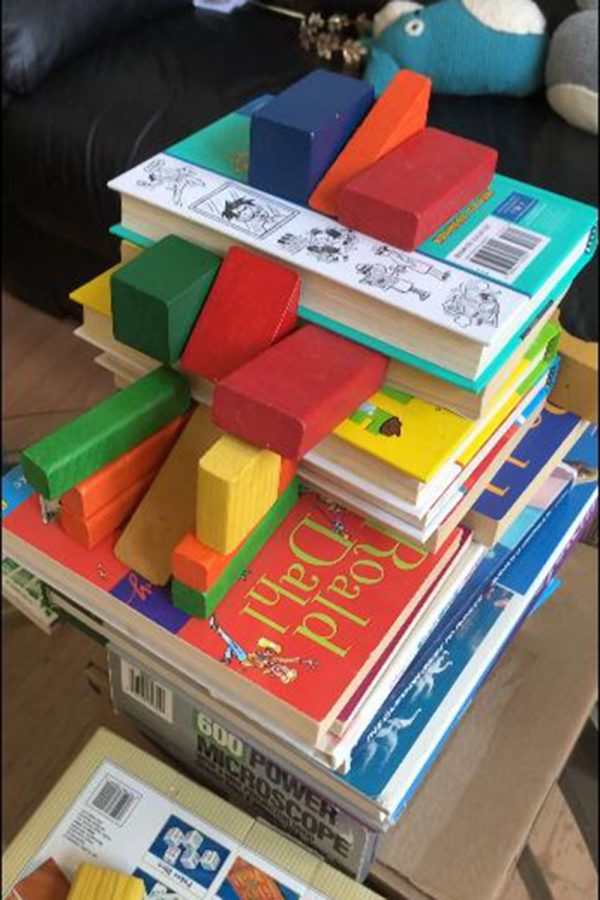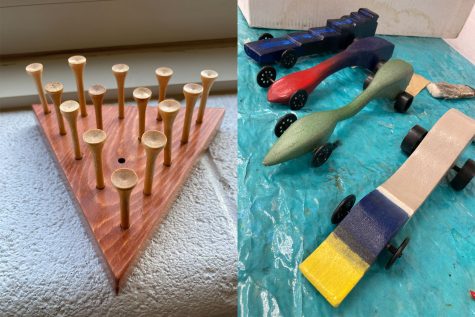Students Use Rube Goldberg Machines to Roll, Push, Drop, & Lever Their Way Into Distance Learning
Student Jaydon S. created his Rube Goldberg machine using household materials like books and blocks.
Early this year, Students in Design Engineering and Modeling (also known as Shop class) were creating machines to perform simple tasks in an overly complicated way, and it was all kinds of fun. They studied the famous Rube Goldberg, an American cartoonist, engineer, and inventor. In 1914, Goldberg created the Rube Goldberg Machine. He was determined to use his engineering knowledge to create havoc through simple tasks such as shutting a door or pouring a glass of water. Students in Ms. Boomer’s shop class were challenged to do just that by choosing one of the simple machines such as the inclined plane, lever, wedge, pulley, screw, or wheel and axle. (Scroll to the bottom to see some of the machines in action.)
“Simple machines are the basis of his designs, which is what I wanted to convey to the students. Learn the simple machines and understand how they’re used,” stated Ms. Boomer.
While simple machines are the basis of Goldberg’s designs, we accomplish simple tasks with everyday devices. For example, the wheel is considered one of the most significant inventions in the history of the world. The wheel dramatically reduces the friction encountered when an object moves over a surface.
Students watched a presentation on Rube Goldberg and how he used these simple machines to create the crazy device. Students had to find materials around their homes with which to create their own simple machine.

“The materials I used for my Rube Goldberg machine were a pencil, domino’s, paper clip, three balls, building blocks, a PVC pipe, and cardboard,” said shop student Alex V.
Boomer described other materials such as old toys, dominoes, Matchbox cars, pulleys, books and CD’s, and rulers.
“One of the interesting machines I saw was one made with only paper, cardboard, and tape,” explained Mrs. Boomer.
Although students had the freedom to choose their own materials, it was still a challenging task.
“The most challenging aspect of the Rube Goldberg device for me would have to be the trial and error,” explained Alex. “This project was not hard to set up, however. It took many, many tries to get it right. This was frustrating because I had to set it up over and over again.”
While the project was broken down into many parts by Ms. Boomer, this was still a long and challenging task to accomplish. Students learned more than just the six simple machines.
“During the process of the Rube Goldberg project, I learned a lot about how simple machines are built and who Rube Goldberg was as an inventor,” said Alex.
Ms. Boomer created the project as something students could do at home to meet the challenges of distance learning. It was such a success she would love to use it in the future when students finally get back into the classroom.







